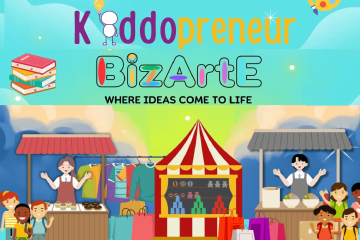Most of us have come across the theory that left-brained individuals excel in logic, mathematics, and linear thinking, while right-brained people are more creative, more inclined to arts, and adapt more to holistic thinking. This theory was borne out of Nobel Prize winner Roger Sperry’s research during the 1960s. By the 1980s, another theory emerged in the form of multiple intelligences by Howard Gardner, which postulates that each individual has the capacity to learn various subjects in various ways.
Multiple intelligences state that we can excel in a more dominant aspect of learning whether in linguistics, mathematics, or kinesthetics. Gardner came up with the theory by performing cognitive research that led him to seven specific intelligences based on the different ways his subjects acquired learning, used memory, performed, and understood subjects. To put it simply, multiple intelligences suggests that we all learn holistically but develop different capacities and intelligences which customized instruction through schooling can further draw out and nurture in each individual.
Types of Multiple Intelligences
The theory has identified nine multiple intelligences:
Verbal-linguistic
The ability to develop verbal aptitude through excellent reception to sound, adaptation of meanings, and responsiveness to word rhythms. Wordsmith William Shakespeare is considered as a verbal-linguistic intellectual.
Musical

Can develop the appreciation for musical rhythms and its many elements including arrangement and theories. For examples there are many, but classical icon Ludwig Van Beethoven certainly stands out.
Existential
The responsiveness to thought subjects such as human existence, life, and death, and evolution. Actor Tom Cruise is an existentialist for his interest in philosophy.
Interpersonal
The ability to develop sensitivity towards other people’s emotions, goals, and how they think in general. Social people who are outgoing and can learn in groups or in partnerships belong to this group including motivational speaker Tony Robbins.
Intrapersonal

Being in tune with one’s self in terms of feelings, thoughts, and behavior. This may surprise you, but ‘theory of relativity’ scientist Albert Einstein is one such example for his introvert nature and self-motivation.
Mathematical-Logical
The ability to comprehend numerical concepts and abstract theories by applying logic, reasoning, and the identification of correlations. A perfect example would be tech guru and entrepreneur Bill Gates.
Visual-Spatial

Can draw out ideas and aesthetics from graphic concepts such as photos and visual art, and can easily spot abstract and accurate details. Italian polymath Leonardo Da Vinci is considered as a visual-spatial genius.
Naturalist
Pertaining more to individuals who have a more profound appreciation of biology and nature in general. One naturalist thinker is astrophysicist Neil deGrasse Tyson.
Bodily-Kinesthetic

Sports idols such as Michael Jordan is a good example of this type of intelligent individual.
Of course, individuals can develop several bits of intelligence but most often, only one can be dominant to each. This dominant intelligence serves as a gauge of some sort on how they perform things at work or interact with other people.
Learning Styles for Multiple Intelligences
If you are an educator, determining your students’ type of intelligence will help you develop which learning style is appropriate for each of them. With today’s online resources, there are various types of multimedia that can help you prepare presentations that can teach and develop a particular intelligence.
Learning with the use of multimedia allows a student to nurture a deeper understanding of subjects, improve problem-solving capabilities, develop positive thinking, and explore a broader scope of learning.
For the various specific modes of multimedia learning for multiple intelligences, these methods stand out as some of the most effective:
Instructional Setting
This technique gives importance to a student’s pace in acquiring knowledge. By giving emphasis on design, environment and visual materials, educators can educate the child according to his interests and without much pressure.
Realia
This entails the use of objects to develop a student’s motor skills. One advantage of using this technique is how an educator can present tangible information that can help the student develop knowledge much faster and easier.
Color
Pre-school educators utilize color to differentiate visual objects and teach the students proper associations and definitions.
Visuals

Most educators often rely on visuals to give a more concrete presentation of their subject matters. Students find it easier to learn certain concepts through visual aids as they allow them to identify spatial correlations more effectively.
Sound
This technique is very ideal for students with musical intelligence although educators can also use sound as a memorization technique than can hone recall. These days, those who want to learn simply download audiobooks online to learn new things as it is less time-consuming and much more convenient.

This is arguably the most common of teaching tools to be utilized by educators as it can always present ready information and is designed for optimum comprehension. The use of printed words is certainly your textbook definition of an effective teaching method (pun intended).
Motion
This technique is the best method to use when teaching bodily-kinesthetic concepts. Students can study and copy motion to develop their own motor skills or physical performance.
Learner Characteristics
When using multimedia to teach students, educators should carefully and meticulously select materials that are appropriate to the learning capacities of their class. While there is yet a formal study on the specific types of multimedia for various learner categories, teachers should always consider that multimedia may have varied effects on different students.
Reading Ability
While individuals may have different capacities in reading skills, educators must likewise consider what reading tools can be easier for students to adapt. Books with pictures or animated entries help poor readers comprehend the subject matter better, while voracious readers often prefer to have books that list bibliographies so they can refer to more available resources for further reading.
Categories of Learning Outcomes
According to Gagne (1997) in terms of the concept of learning outcomes, there are three domains where students may fall under. They are the cognitive domain or the development of an indivdual’s mental skills and knowledge development; the affective which involves intangible concepts such as feelings, emotions, and behavior; and psychomotor which refers to the use of motor skills, physical capabilities, and coordination.
Performance
The practical application of learning through the performance of tasks teaches students to retain learning and allows educators to measure their capacities. There are various facets when using this teaching technique such as recitations in classroom settings, motor skills in sports education, or overt methods such as written examinations among others.
Events of Instruction
Educators should also select external references that can support their internal curricula when selecting multimedia materials. These learning aids should help guide their students to follow their instructions properly during learning practices.
Educators have embraced Gardner’s concept of multiple intelligences as it has resolved a number of challenges in the academe throughout the years. More students continue to benefit from the right instructional setting, educational resources, and teaching methods, short to say that understanding one’s teaching style and adapting to which suits students the best can greatly help to the success of a student’s learning process.
Learning Links promotes meaningful education and personal growth to help find what students really want for their careers and lives!
Click on the button below to find out how we make great education possible.



